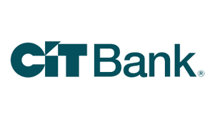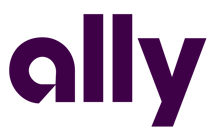When life throws you a curveball -- a medical bill, job loss, or major home repair -- you need an emergency fund that's ready to go. The best place to keep that money is somewhere that's safe and accessible while earning a solid interest rate.
I've rounded up a few of our top picks that balance security with great yields. Keep reading to see my picks for the best places to keep your emergency fund in 2025.
- Our team of experts assessed 100+ banking institutions
- We evaluate all banking institutions across the same 4 key criteria: annual percentage yield (APY), brand reputation, fees and minimum requirements, and additional perks
- Our bank ratings are never influenced by our advertising partners
- We strictly feature products that offer federal insurance and high customer satisfaction, keeping our recommendations unbiased
Our top places to keep your emergency fund picks
Best places to keep your emergency fund
Best for high APY with flexibility: SoFi Checking and Savings (Member FDIC)
SoFi Checking and Savings
On SoFi's Secure Website.

On SoFi's Secure Website.
- Competitive APY on both Savings and Checking
- No monthly account fee
- Welcome bonus up to $300 (direct deposit required)
- ATM access
- Unlimited number of external transfers (up to daily transaction limits)
- FDIC insured (up to $3M with opt-in to SoFi Insured Deposit Program)
- Early access to direct deposits
- Tools to help you track savings goals
- Combo account only; no stand-alone savings or checking
- Maximum Savings APY requires direct deposit
- No branch access; online only
- Overdraft protection requires monthly direct deposit minimum
For those who plan to set up direct deposit with their new account, we think SoFi Checking and Savings (Member FDIC) is hard to beat. Not only does this savings account offer a strong APY, but the linked checking account earns an above-average rate, too -- which is a rare perk. Plus, new customers earn a bonus of up to $300 with eligible direct deposit. Frankly, it's the kind of combo that could make it worthwhile to switch banking relationships.
You can earn the maximum APY either by making direct deposits into checking or savings, or by depositing $5,000 or more every 30 days. Learn more.
SoFi®'s combo checking and high-yield savings accounts gives you access to all your money in one place, with up to 3.80% annual percentage yield (APY) when you set up direct deposit or make qualifying monthly deposits. It's FDIC insured, has no account fees, and includes features like automatic savings buckets.
As a SoFi® user myself, I can also vouch for the interface's intuitiveness and ease of use. I'd definitely recommend it to a friend.
Best for top APY on larger account balances: CIT Platinum Savings
CIT Platinum Savings
On CIT's Secure Website.

On CIT's Secure Website.
- Competitive APY
- No account opening or maintenance fees
- Unlimited number of external transfers (up to daily transaction limits)
- FDIC insured
- Interest compounds daily so your money can grow a bit faster
- Balance requirement for maximum APY
- No branch access; online only
CIT Platinum Savings is a no-frills high-interest savings account that offers one of the highest APYs we've found available today -- as long as you can maintain a $5,000 minimum balance. Plus, customers can make an unlimited number of transfers and withdrawals each month (many savings accounts have monthly limits).
If you can keep $5,000 or more in savings, CIT rewards you with a valuable 4.00% APY (one of the highest available right now). There's no monthly fee, and you can link an external bank for easy transfers.
Just note that balances under $5,000 earn a much lower rate, so this option is best for larger balances. But if you can keep at least $5,000 in there, this is the way to go.
Best for easy access with a solid rate: Discover® Money Market
Discover® Money Market
On Discover Bank's Secure Website.

On Discover Bank's Secure Website.
- Competitive APY
- No minimum balance to maintain account
- No monthly fee
- Debit card and check availability
- No minimum deposit required to open
- FDIC insured
- Best rate requires at least $100,000
- No in-person banking/branches
This account offers a competitive APY, especially given there are no monthly service fees, while still giving access to ATMs and checks. You don't need to maintain a high balance to earn a good rate.
Discover® Bank's money market account offers 3.40%-3.45% APY, depending on your balance.
You'll also get check-writing and debit card access, which makes it easy to tap into during a real emergency. Plus, there are no monthly fees or minimum balance requirements.
Best for all-around accessibility: Ally Money Market Account
Ally Money Market Account

- FDIC insured
- No monthly fee
- ATM access
- Checking privileges
- No cash deposits
- No branches
Ally's banking approach carries over to its money market account with a high APY and a focus on cutting routine account fees to $0, including monthly maintenance. What's more, there are no minimum balance requirements.
Ally's money market account earns interest and includes a debit card and check access, so your cash is always within reach. You'll earn a competitive 3.50% APY that makes sure your money's earning while it remains safe.
Ally is also known for its customer service and easy-to-use mobile app, ideal for handling a sudden expense on the go.
Our methodology for scoring banks and credit unions revolves around evaluating key aspects such as annual percentage yield (APY), brand reputation, fees and minimum requirements, and additional perks.
These criteria are weighted differently across various account types, ensuring a comprehensive assessment that reflects the competitive landscape and economic conditions.
We strictly feature products that offer federal insurance and high customer satisfaction, keeping our recommendations unbiased by advertiser influence. This robust evaluation process helps us generate balanced, reliable best-of lists that guide consumers to top financial products.
Learn more about how Motley Fool Money rates bank accounts.
Our methodology for scoring banks and credit unions revolves around evaluating key aspects such as annual percentage yield (APY), brand reputation, fees and minimum requirements, and additional perks.
These criteria are weighted differently across various account types, ensuring a comprehensive assessment that reflects the competitive landscape and economic conditions.
We strictly feature products that offer federal insurance and high customer satisfaction, keeping our recommendations unbiased by advertiser influence. This robust evaluation process helps us generate balanced, reliable best-of lists that guide consumers to top financial products.
Learn more about how Motley Fool Money rates bank accounts.
How to choose the right place to keep your emergency fund
Any emergency-fund option should come with a mix of accessibility, safety, and earning potential.
Your emergency fund should be in a liquid, low-risk account, ideally one that earns at or around 4.00% APY. You should also avoid locking it in a CD or investment account where you might face penalties if you have to pull out your money early -- after all, you want to have access to your emergency fund 24/7.
Why FDIC insurance matters
Every account on this list is FDIC insured (or NCUA insured in the case of credit unions), which protects your balance up to $250,000 per depositor, per institution. That's crucial for emergency savings, because you want absolute peace of mind.
Should I use a money market or savings account?
Both work well, but money market accounts tend to offer easier access with debit cards and check-writing. High-yield savings accounts might offer better rates, but may not have built-in spending tools.
-
Sources
FAQs
-
Most experts recommend putting three to six months of expenses in an emergency fund. If your job is unstable or you have dependents, you might consider saving more.
-
It's not ideal. CDs often charge early withdrawal penalties, and emergencies don't wait for maturity dates. Stick with liquid accounts instead.
-
Yes, as long as the account is separate and earns a decent rate. And be careful not to dip into it for non-emergencies.
-
Yes. Interest from savings or money market accounts is considered taxable income, even if you don't withdraw it.
We're firm believers in the Golden Rule, which is why editorial opinions are ours alone and have not been previously reviewed, approved, or endorsed by included advertisers. Motley Fool Money does not cover all offers on the market. Motley Fool Money is 100% owned and operated by The Motley Fool. Our knowledgeable team of personal finance editors and analysts are employed by The Motley Fool and held to the same set of publishing standards and editorial integrity while maintaining professional separation from the analysts and editors on other Motley Fool brands. Terms may apply to offers listed on this page. APYs are subject to change at any time without notice.
